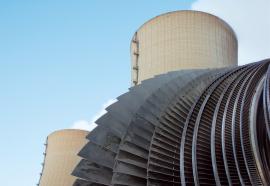Energy Department Invests $60 Million to Advance Nuclear Technology
Submitted by aburr on Sun, 2015-06-21 16:46The Energy Department announced more than $60 million in nuclear energy research and infrastructure enhancement awards. Sixty-eight projects from across the country were selected based on their potential to create scientific breakthroughs that both help strengthen the nation's energy security and reduce harmful greenhouse gas emissions.





